Savo Glisic, Beatriz Lorenzo047074250X, 9780470742501, 9780470745731
Table of contents :
Advanced Wireless Networks……Page 4
Contents……Page 10
Preface to the Second Edition……Page 22
1.1 4G Networks and Composite Radio Environment……Page 26
1.2 Protocol Boosters……Page 32
1.2.4 One-element ARQ booster for TCP……Page 34
1.2.6 Two-element jitter control booster for IP……Page 35
References……Page 36
2.1 Multiuser Diversity……Page 40
2.2 Proportional Fair Scheduling……Page 41
2.3 Opportunistic Beamforming……Page 44
2.4 Opportunistic Nulling in Cellular Systems……Page 45
2.5 Network Cooperation and Opportunistic Communications……Page 47
2.5.1 Performance example……Page 50
2.6 Multiuser Diversity in Wireless Ad Hoc Networks……Page 52
2.6.1 Multiple-output and multiple-input link diversity……Page 54
2.6.2 Localized opportunistic transmission……Page 55
2.6.3 Multiuser diversity-driven clustering……Page 56
2.6.5 CDF-based K-ary opportunistic splitting algorithm……Page 59
2.6.7 Optimal opportunistic MAC……Page 62
2.6.8 Contention resolution between clusters……Page 63
2.6.9 Performance examples……Page 65
2.7 Mobility-Assisted Opportunistic Scheduling (MAOS)……Page 71
2.7.1 Mobility models……Page 73
2.7.2 Optimal MAOS algorithm……Page 74
2.7.4 Mobility estimation and prediction……Page 76
2.7.6 Performance examples……Page 77
2.8.1 The system model……Page 78
2.8.2 The outage probability……Page 82
2.8.3 Cellular traffic shaping……Page 83
2.8.4 User mobility modeling……Page 84
2.8.5 Absorbing Markov chain system model……Page 86
2.8.6 Throughput analysis……Page 87
2.8.8 Opportunistic transmission with intercell interference awareness……Page 90
2.8.9 Performance examples……Page 93
References……Page 95
3.1.1 The system model……Page 98
3.1.2 System optimization……Page 100
3.1.3 Relay strategy selection optimization……Page 104
3.1.4 Performance example……Page 109
3.2 Mesh/Relay Networks……Page 110
3.2.1 The system model……Page 111
3.2.2 Exhaustive sleep……Page 113
3.2.3 Practical applications……Page 119
3.2.4 Performance example……Page 120
3.3 Opportunistic Ad Hoc Relaying For Multicast……Page 122
3.3.1 The system model……Page 123
3.3.2 Proxy discovery and route interference……Page 124
3.3.3 Near-optimal multicast and approximations……Page 126
3.3.4 Performance examples……Page 128
References……Page 132
4 Topology Control……Page 138
4.1.1 Basics of MST topology control……Page 140
4.2 Joint Topology Control, Resource Allocation and Routing……Page 143
4.2.1 JTCR algorithm……Page 146
4.3 Fault-Tolerant Topology……Page 148
4.3.2 Fault-tolerant topology design……Page 149
4.3.3 Þ-Approximation algorithms……Page 152
4.4 Topology Control in Directed Graphs……Page 157
4.4.2 Minimum-weight-based algorithms……Page 158
4.4.3 Augmentation-based algorithms……Page 160
4.5 Adjustable Topology Control……Page 163
4.5.1 The system model……Page 165
4.5.2 The r-neighborhood graph……Page 167
4.6 Self-Configuring Topologies……Page 168
4.6.1 SCT performance……Page 170
References……Page 173
5.1 WLAN Enhanced Distributed Coordination Function……Page 182
5.2.1 Description of the protocols……Page 185
5.3 MAC for Wireless Sensor Networks……Page 191
5.3.1 S-MAC protocol design……Page 192
5.3.3 Collision avoidance……Page 193
5.3.5 Choosing and maintaining schedules……Page 194
5.3.7 Adaptive listening……Page 195
5.3.10 Message passing……Page 197
5.4 MAC for Ad Hoc Networks……Page 199
5.4.1 Carrier sense wireless networks……Page 201
5.4.2 Interaction with upper layers……Page 204
References……Page 205
6.1 Channel Holding Time in PCS Networks……Page 208
References……Page 216
7.1.2 Directed graph……Page 218
7.1.4 Degree of a vertex……Page 219
7.1.7 Connected graphs……Page 220
7.1.8 Trees……Page 221
7.1.9 Spanning tree……Page 222
7.1.10 MST computation……Page 224
7.1.11 Shortest path spanning tree……Page 226
7.2 Graph Theory……Page 237
7.3 Routing with Topology Aggregation……Page 239
7.4 Network and Aggregation Models……Page 240
7.4.1 Line segment representation……Page 242
7.4.3 Mesh formation……Page 245
7.4.4 Star formation……Page 246
7.4.5 Line-segment routing algorithm……Page 247
7.4.6 Performance measure……Page 249
7.4.7 Performance example……Page 250
References……Page 253
8.1 Effective Traffic Source Parameters……Page 260
8.1.1 Effective traffic source……Page 262
8.1.3 Shaping delay……Page 263
8.1.4 Performance example……Page 266
8.2 Effective Link Layer Capacity……Page 268
8.2.1 Link-layer channel model……Page 269
8.2.2 Effective capacity model of wireless channels……Page 271
8.2.3 Physical layer vs link-layer channel model……Page 274
8.2.4 Performance examples……Page 276
References……Page 279
9.1 Introduction……Page 282
9.1.1 A large bandwidth-delay product……Page 283
9.1.2 Buffer size……Page 284
9.1.3 Round-trip time……Page 285
9.1.4 Unfairness problem at the TCP layer……Page 286
9.1.6 End-to-end solutions……Page 287
9.1.7 Bandwidth asymmetry……Page 288
9.2.1 The TCP transmitter……Page 289
9.2.7 TCP-Reno fast retransmit, fast (but conservative) recovery……Page 290
9.2.8 TCP-NewReno (fast retransmit, fast recovery)……Page 291
9.2.10 Modeling of TCP operation……Page 292
9.3 TCP for Mobile Cellular Networks……Page 293
9.3.1 Improving TCP in mobile environments……Page 294
9.3.2 Mobile TCP design……Page 295
9.3.3 The SH-TCP client……Page 297
9.3.4 The M-TCP protocol……Page 298
9.3.5 Performance examples……Page 300
9.4.1 The RED algorithm……Page 301
9.4.2 Performance example……Page 302
9.5.3 Effect of multipath routing……Page 305
9.5.4 ATCP sublayer……Page 306
9.5.5 ATCP protocol design……Page 307
References……Page 312
10.1 Introduction……Page 314
10.2.1 TCP congestion control……Page 315
10.2.2 TCP Reno/RED……Page 316
10.2.4 Optimization of the MAC protocol……Page 317
10.2.5 Utility optimal MAC protocol/social optimum……Page 320
10.3.1 Congestion control and routing……Page 323
10.3.2 Congestion control and physical resource allocation……Page 326
10.3.3 Congestion and contention control……Page 328
10.3.4 Congestion control, routing and scheduling……Page 331
10.4.1 Decoupling coupled constraints……Page 332
10.4.2 Dual decomposition of the basic NUM……Page 333
10.4.4 Decoupling coupled objectives……Page 335
10.4.5 Alternative decompositions……Page 338
10.4.6 Application example of decomposition techniques to distributed crosslayer optimization……Page 340
10.5.1 Nonconcave utility flows……Page 344
10.5.2 Capacity provisioning for convergence of the basic algorithm……Page 347
10.6.1 The system model……Page 348
10.6.2 Solving the nonconvex optimization problem for joint congestion–contention control……Page 350
10.7 Optimization of Layered Multicast by Using Integer and Dynamic Programming……Page 351
10.7.1 The system model……Page 352
10.7.3 Group profit maximization by dynamic programming……Page 354
10.8.1 The system model……Page 356
10.8.2 Dynamic control algorithm……Page 357
10.9 Network Optimization by Geometric Programming……Page 362
10.9.1 Power control by geometric programming: high SNR……Page 363
10.10 QoS Scheduling by Geometric Programming……Page 365
10.10.2 Maximum weight matching scheduling by GP……Page 369
10.10.4 Rescue scheduling by GP……Page 370
References……Page 371
11.1 Introduction……Page 376
11.1.1 Mobility management in cellular networks……Page 378
11.1.2 Location registration and call delivery in 4G……Page 380
11.2 Cellular Systems with Prioritized Handoff……Page 399
11.2.2 Channel reservation – CR handoffs……Page 402
11.2.3 Channel reservation with queueing – CRQ handoffs……Page 403
11.2.4 Performance examples……Page 407
11.3 Cell Residing Time Distribution……Page 408
11.4 Mobility Prediction in Pico- and MicroCellular Networks……Page 413
11.4.1 PST-QoS guarantees framework……Page 415
11.4.2 Most likely cluster model……Page 416
Appendix: Distance Calculation in an Intermediate Cell……Page 423
References……Page 428
12.1 Channel Assignment Schemes……Page 432
12.1.1 Different channel allocation schemes……Page 434
12.1.3 Channel borrowing schemes……Page 435
12.1.4 Simple channel borrowing schemes……Page 436
12.1.5 Hybrid channel borrowing schemes……Page 437
12.1.6 Dynamic channel allocation……Page 439
12.1.7 Centralized DCA schemes……Page 440
12.1.8 Cell-based distributed DCA schemes……Page 442
12.1.9 Signal strength measurement-based distributed DCA schemes……Page 444
12.1.10 One-dimensional cellular systems……Page 445
12.1.11 Reuse partitioning (RUP)……Page 447
12.2.1 Single-cell environment……Page 451
12.2.2 Resource allocation……Page 455
12.3 Packet-Switched SDMA/TDMA Networks……Page 460
12.3.1 The system model……Page 462
12.3.2 Multibeam SDMA/TDMA capacity and slot allocation……Page 464
12.3.3 SDMA/TDMA slot allocation algorithms……Page 466
12.3.4 SDMA/TDMA performance examples……Page 470
12.4.1 The system model……Page 471
12.4.2 Resource allocation algorithm……Page 473
12.4.3 Impact of OFDM/SDMA system specifications on resource allocations……Page 475
12.4.4 Performance examples……Page 478
12.5 Intercell Interference Cancellation – SP Separability……Page 479
12.5.1 Channel and cellular system model……Page 480
12.5.2 Turbo space–time multiuser detection for intracell communications……Page 482
12.5.3 Multiuser detection in the presence of intercell interference……Page 484
12.5.4 Performance examples……Page 485
12.6 Intercell Interference Avoidance in SDMA Systems……Page 486
12.6.1 The BOW scheme……Page 492
12.6.3 Constrained QRA-IA……Page 493
12.7 Multilayer RRM……Page 495
12.7.1 The SRA protocol……Page 496
12.7.2 The ESRA protocol……Page 498
12.8 Resource Allocation with Power Preassignment (RAPpA)……Page 500
12.8.1 Resource assignment protocol……Page 501
12.8.2 Analytical modeling of RAPpA……Page 504
12.9 Cognitive and Cooperative Dynamic Radio Resource Allocation……Page 509
12.9.1 Signal-to-interference ratio……Page 511
12.9.2 System performance……Page 513
12.9.3 Multicell operation……Page 516
12.9.4 Performance examples……Page 517
Appendix 12A: Power Control, CD Protocol, in the Presence of Fading……Page 519
Appendix 12B: Average Intercell Throughput……Page 523
References……Page 524
13.1 Routing Protocols……Page 530
13.1.1 Routing protocols……Page 532
13.1.2 Reactive protocols……Page 537
13.2 Hybrid routing protocol……Page 549
13.2.1 Loop-back termination……Page 551
13.2.2 Early termination……Page 552
13.2.3 Selective broadcasting (SBC)……Page 553
13.3.1 Hierarchical routing protocols……Page 556
13.3.2 Performance examples……Page 558
13.3.3 FSR (fisheye routing) protocol……Page 559
13.4 Multipath Routing……Page 562
13.5.1 Introduction……Page 564
13.5.2 Clustering algorithm……Page 566
13.5.3 Clustering with prediction……Page 567
13.6.1 Cache management……Page 574
13.7.2 Routing……Page 583
13.7.4 Token-based routing……Page 584
13.7.5 Delay-constrained routing……Page 585
13.7.6 Tokens……Page 586
13.7.9 Forwarding the received tickets……Page 587
13.7.10 Performance example……Page 589
References……Page 592
14.1 Introduction……Page 598
14.2 Sensor Networks Parameters……Page 600
14.2.2 Post-deployment phase……Page 601
14.3 Sensor networks architecture……Page 602
14.3.2 Data link layer……Page 603
14.3.3 Network layer……Page 606
14.3.4 Transport layer……Page 610
14.3.5 Application layer……Page 611
14.4 Mobile Sensor Networks Deployment……Page 612
14.5 Directed Diffusion……Page 615
14.5.1 Data propagation……Page 616
14.6 Aggregation in Wireless Sensor Networks……Page 618
14.7 Boundary Estimation……Page 621
14.7.2 Kraft inequality……Page 623
14.7.3 Upper bounds on achievable accuracy……Page 624
14.7.4 System optimization……Page 625
14.8 Optimal Transmission Radius in Sensor Networks……Page 627
14.8.1 Back-off phenomenon……Page 631
14.9 Data Funneling……Page 632
14.10 Equivalent Transport Control Protocol in Sensor Networks……Page 635
References……Page 638
15.1 Authentication……Page 648
15.1.1 Attacks on simple cryptographic authentication……Page 650
15.1.2 Canonical authentication protocol……Page 654
15.2 Security Architecture……Page 656
15.3 Key Management……Page 660
15.3.4 Proof of knowledge of a key……Page 662
15.3.5 Point-to-point key distribution……Page 663
15.4 Security management in GSM networks……Page 664
15.5 Security management in UMTS……Page 668
15.6 Security architecture for UMTS/WLAN Interworking……Page 670
15.7 Security in Ad Hoc Networks……Page 672
15.7.1 Self-organized key management……Page 676
15.8 Security in Sensor Networks……Page 677
References……Page 679
16.1 Introduction……Page 684
16.2 Programable Networks Reference Models……Page 686
16.2.2 Active networks reference architecture……Page 687
16.3 Evolution to 4G Wireless Networks……Page 690
16.4 Programmable 4G Mobile Network Architecture……Page 692
16.5 Cognitive Packet Networks……Page 695
16.5.1 Adaptation by cognitive packets……Page 697
16.5.2 The random neural networks-based algorithms……Page 698
16.6 Game Theory Models in Cognitive Radio Networks……Page 700
16.6.1 Cognitive radio networks as a game……Page 703
16.7.1 Bio-analogies……Page 707
16.7.2 Bionet architecture……Page 709
References……Page 711
17.1 Cellular Systems with Overlapping Coverage……Page 718
17.2 Imbedded Microcell in CDMA Macrocell Network……Page 723
17.2.1 Macrocell and microcell link budget……Page 724
17.2.2 Performance example……Page 727
17.3 Multitier Wireless Cellular Networks……Page 728
17.3.1 The network model……Page 729
17.3.2 Performance example……Page 733
17.4 Local Multipoint Distribution Service……Page 734
17.4.2 Alternating polarization……Page 736
17.5.1 Motivation……Page 738
17.5.2 Networks self-organizing technologies……Page 740
References……Page 742
18.1 The Simple Network Management Protocol……Page 746
18.2 Distributed Network Management……Page 750
18.3 Mobile Agent-Based Network Management……Page 751
18.3.2 Mobile agents in multioperator networks……Page 753
18.3.3 Integration of routing algorithm and mobile agents……Page 755
18.4.2 Time varying topology……Page 760
18.4.7 Ad hoc network management protocol functions……Page 761
18.4.8 ANMP architecture……Page 763
References……Page 768
19.1 Effective Capacity of Advanced Cellular Networks……Page 772
19.1.1 4G cellular network system model……Page 774
19.1.2 The received signal……Page 775
19.1.3 Multipath channel: near–far effect and power control……Page 777
19.1.4 Multipath channel: pointer tracking error, rake receiver and interference canceling……Page 778
19.1.5 Interference canceler modeling: nonlinear multiuser detectors……Page 780
19.1.7 Outage probability……Page 782
19.2 Capacity of Ad Hoc Networks……Page 786
19.2.1 Arbitrary networks……Page 787
19.2.2 Random networks……Page 789
19.2.3 Arbitrary networks: an upper bound on transport capacity……Page 790
19.2.4 Arbitrary networks: lower bound on transport capacity……Page 793
19.2.5 Random networks: lower bound on throughput capacity……Page 794
19.3.1 Network architecture……Page 798
19.3.2 Definition of feasible rate vectors……Page 800
19.3.4 Upper bounds under high attenuation……Page 801
19.3.5 Multihop and feasible lower bounds under high attenuation……Page 802
19.3.6 The low-attenuation regime……Page 803
19.3.7 The Gaussian multiple-relay channel……Page 804
19.4 Cooperative Transmission in Wireless Multihop Ad Hoc Networks……Page 805
19.4.1 Transmission strategy and error propagation……Page 808
19.4.3 Simulation environment……Page 809
19.5 Network Coding……Page 812
19.5.1 Max-flow min-cut theorem (mfmcT)……Page 813
19.5.2 Achieving the max-flow bound through a generic LCM……Page 814
19.5.3 The transmission scheme associated with an LCM……Page 817
19.5.4 Memoryless communication network……Page 818
19.5.6 Construction of a generic LCM on an acyclic network……Page 819
19.5.7 Time-invariant LCM and heuristic construction……Page 820
19.6 Capacity of Wireless Networks Using MIMO Technology……Page 823
19.6.1 Capacity metrics……Page 825
19.7.1 Network architecture……Page 830
19.7.2 Capacity results……Page 832
References……Page 834
20.1 Energy Cost Function……Page 838
20.2 Minimum Energy Routing……Page 840
20.3 Maximizing Network Lifetime……Page 841
20.4.1 Staggered wakeup schedule……Page 846
References……Page 848
21.1 Blind QoS Assessment System……Page 852
21.1.1 System modeling……Page 854
21.2.1 Contention-based multipolling……Page 856
21.2.2 Polling efficiency……Page 857
21.3 Dynamic Scheduling on RLC/MAC Layer……Page 860
21.3.1 DSMC functional blocks……Page 862
21.3.2 Calculating the high service rate……Page 863
21.3.3 Heading-block delay……Page 865
21.3.5 Normal delay of a newly arrived block……Page 866
21.4 QoS in OFDMA-Based Broadband Wireless Access Systems……Page 867
21.4.1 Iterative solution……Page 871
21.4.2 Resource allocation to maximize capacity……Page 873
21.5 Predictive Flow Control and QoS……Page 874
21.5.1 Predictive flow control model……Page 875
References……Page 879
Index……Page 884
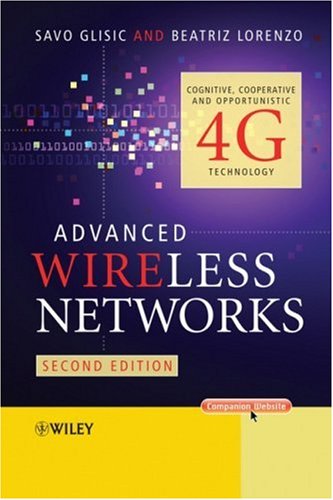
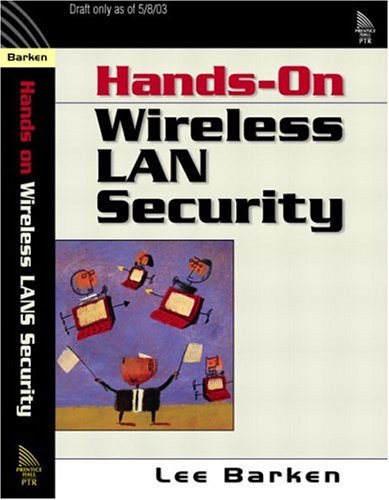
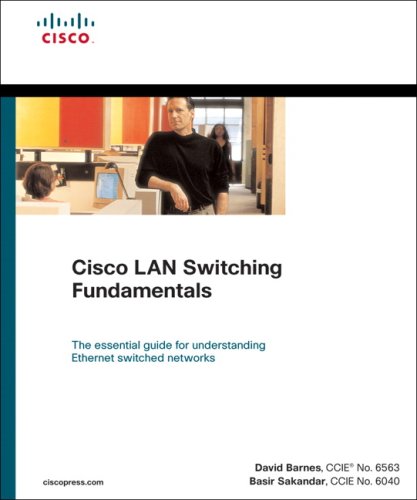

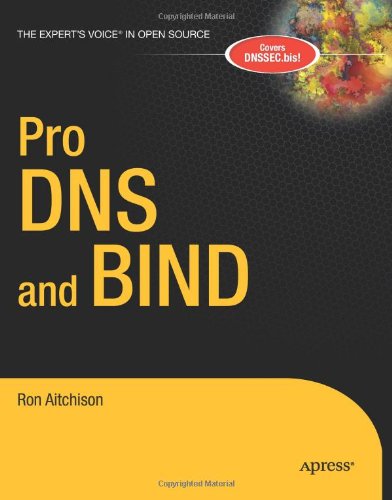
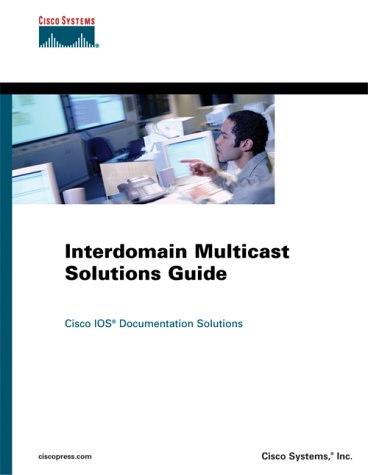

Reviews
There are no reviews yet.